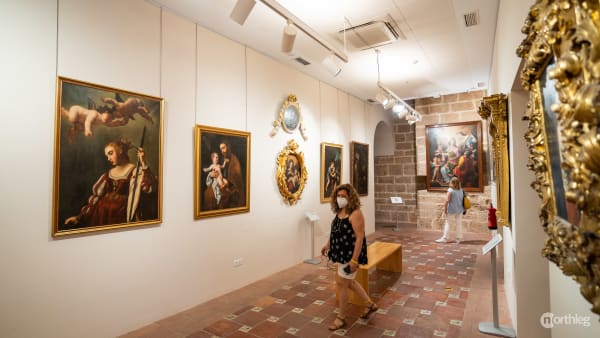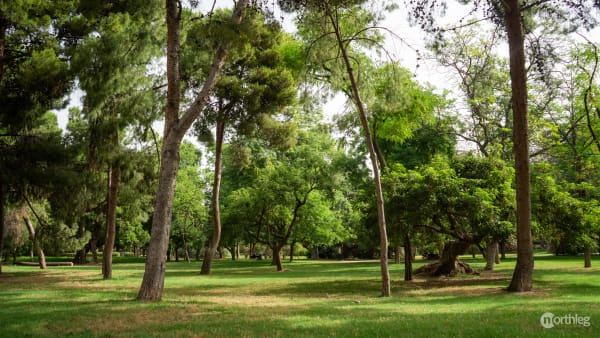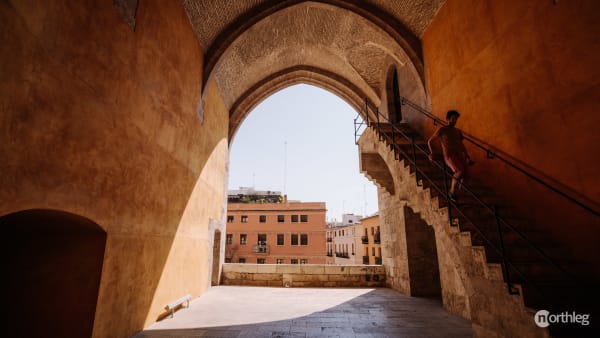Historical buildings and elements
Historical buildings and elements
The lively Plaza del Ayuntamiento is characterised by its (mostly) modernist buildings, some of which act as headquarters of public institutions, such as the Town Hall and the Post Office building, built during the first half of the 20th century.
The current triangular layout of the square is inherited from the 1933 reforms, although no construction dating back to the intervention remains visible.
Town Hall (Ayuntamiento)
Valencia’s Municipal Council (Ayuntamiento de Valencia) is based in the Casa Consistorial, commonly known as the Town Hall building*.*
The City Council is based there, and the building also houses the municipal archives, Valencia’s Municipal History Museum, and various administrative offices.
The construction is made up of two blocks: the older Casa de la Enseñanza, and the newer, annex part that acts as a façade to the whole building.
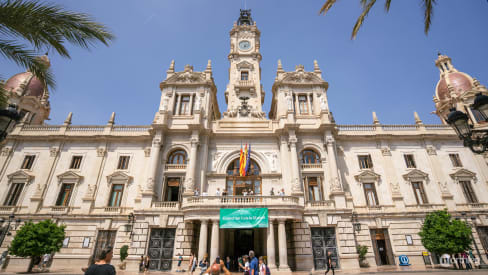
The Casa de la Enseñanza (House of Education) used to be, as the name suggests, a school. Having been built in the second half of the 1700s, its style is Neoclassical and academic, way less monumental and sumptuous than the newer complex.
The newer block, which includes the grandiose façade overlooking the square, was an extension made to the building in the early 1900s. This addition had the double purpose of providing the complex with enough space to run the Municipal Council smoothly, while at the same time conveying the urban importance of the building.
To achieve this, the annex was given a monumental and sumptuous tone, even ostentatious. The style used was a mix of Renaissance and Baroque.
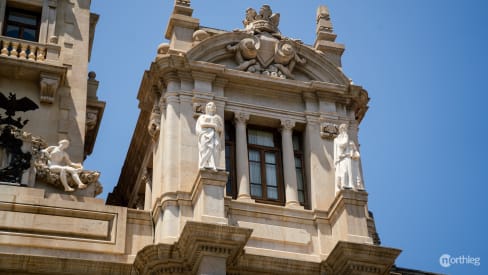
If you’re interested to learn more about this building, you can do so by reading our article on the Ayuntamiento building.
Palacio de las Comunicaciones (Palacio de Correos)
The Palacio de las Comunicaciones (Palace of Communications) is Valencia’s historic mail service building.
For many years, it was known as Palacio de Correos (or simply Correos, meaning Post Office), but it has recently been declared public heritage and no longer functions as a post office in its entirety. A small section is still dedicated to mail services, but the rest of the building can be visited as a tourist sight.

The façade is characterised by a central, taller body where the entrance stands. This section is framed by ionic columns and a semicircular arch, and crowned by allegorical figures.
The group on the left is on a locomotive, while the group on the right is on a ship. These represented the only two means of postal delivery (land and sea) available at the time of construction.
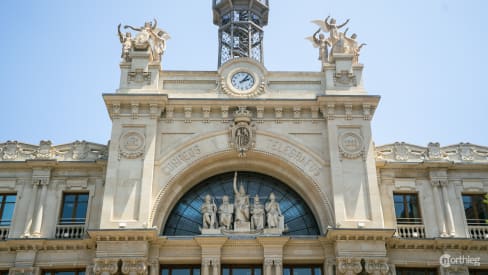
Inside, you’ll find an oval hall surrounded by eighteen Ionic marble columns and arches supporting a two-storey structure. The hall receives natural light through a magnificent iron and stained-glass skylight.
When you visit the building, you’ll be able to admire the beautiful architecture, as well as enjoy any events, exhibitions, or conferences that the Municipality plans to host in this cultural centre.
If you want to send mail or buy stamps, you can still do it in the remaining functioning section of the post office, which you can access in Calle Correos (to the side of the building).

If you’re interested to learn more about this building, you can do so by reading our article on the Correos building.
Fountain
The fountain in Plaza del Ayuntamiento, inaugurated in 1963, is one of the most well-known ones in the city. It is one of the few architectural decorative elements in the square, while other decorations are all provided by the surrounding monuments and the natural landscaping elements.

The structure of the fountain is very simple, with a large circular basin of water from which various, soft jets of water spout. Throughout the day and at night (when the fountain is illuminated) locals of all ages can be seen enjoying the sound of the flowing water in the square.
Flower Market
The Flower Market is an old tradition in Plaza del Ayuntamiento, and the stalls have had their space in the square since the early 20th century.

Over the years they were moved and the Plaza was even remodelled to make room for an underground flower market. Today, the flower stalls resembling newsagents kiosks can be found above ground at the southern edge of the square, between the Town Hall and the Post Office building.
The opening times vary from seller to seller, but most of them are open throughout the week (Monday-Friday) in the morning.










